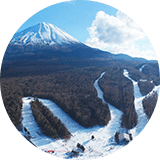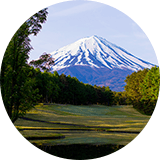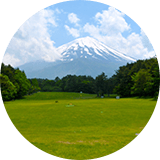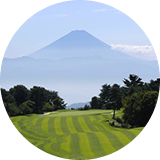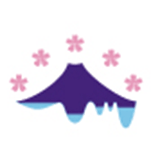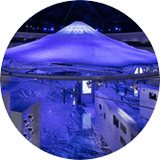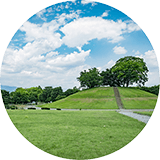What is Fujikawaguchiko like?
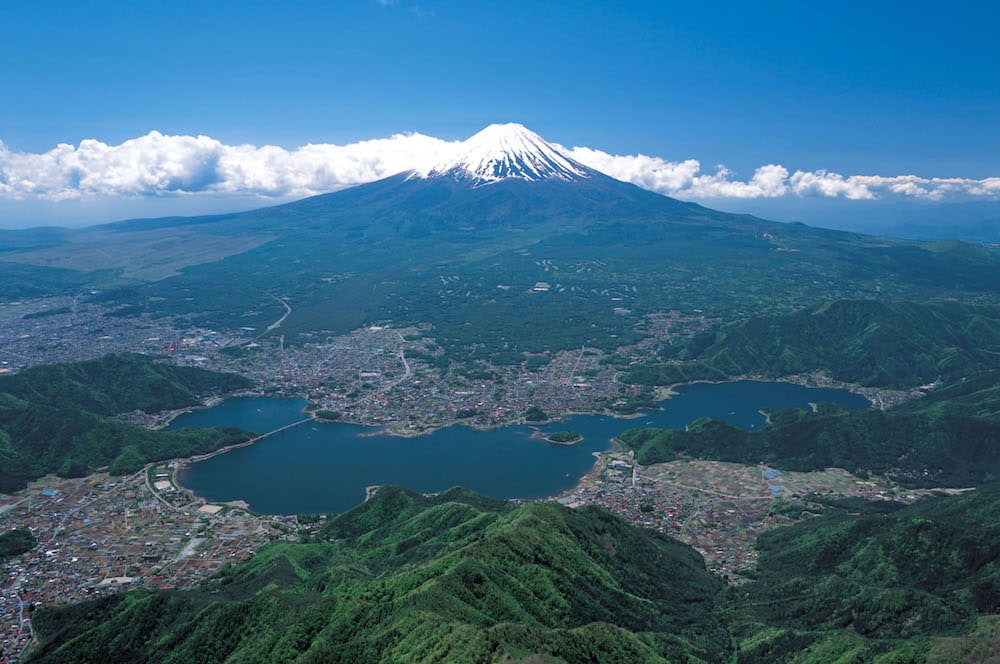
As it’s widely known, Fujikawaguchiko sits at the foot of Mt. Fuji. When you visit here, it feels like Mt. Fuji is always right there following you no matter where you go. It’s not too much to say that Fujikawaguchiko is the place you go to see Mt. Fuji.
Among Japanese people, Mt. Fuji is unquestionably recognized as “the highest mountain in Japan” but it also has been getting attention and recognized internationally since it was added to the list of world cultural heritage sites. We’ll talk about the charms of Mt. Fuji in details later but it’s not too much to say that Mt. Fuji is a must-see place while traveling in Japan. Fujikawaguchiko Town is the perfect place where you can admire this Mt. Fuji every day.
The symbol of this town is Lake Kawaguchiko, which is one of the Fuji Five Lakes. For your information, the other four lakes are Lake Motosuko, Lake Shojiko and Lake Saiko, which are all in Fujikawaguchiko Town, and Lake Yamanakako in Yamanakako Village.
Out of those five lakes, Lake Kawaguchiko has the longest shoreline and it’s located at the lowest altitude. Its area is the second largest out of those five lakes, and its maximum depth of water is 14.6 meters, which is about as deep as Lake Shojiko.
This lake is also recognized as a recreational Black bass fishing spot and it’s a well-known fishing mecca among anglers nationwide mainly for bass fishing.

We’ll quickly introduce the other three lakes in Fujikawaguchiko here.
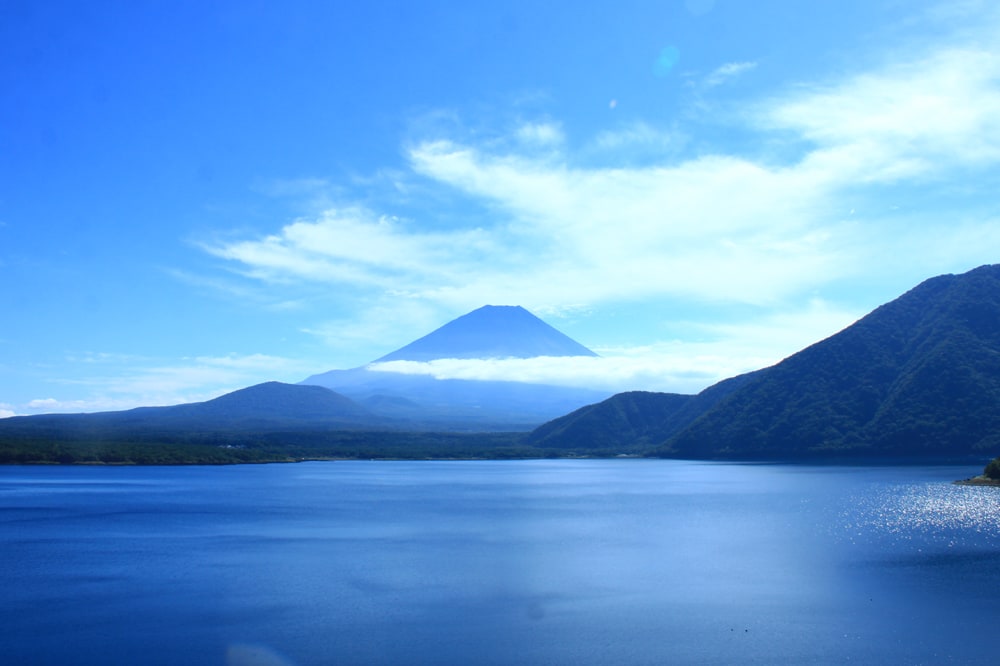
Lake Motosuko…It’s the westernmost lake among the Fuji Five Lakes and its maximum depth is 121.6 meters, which makes it the deepest lake out of those five lakes. It’s also known to have high water transparency. The inverted image of Mt. Fuji on 1,000yen and 5,000yen notes was modeled after this Lake Motosuko’s scenery.
It’s also a windsurfing mecca and it gets bustling with windsurfers during summer.
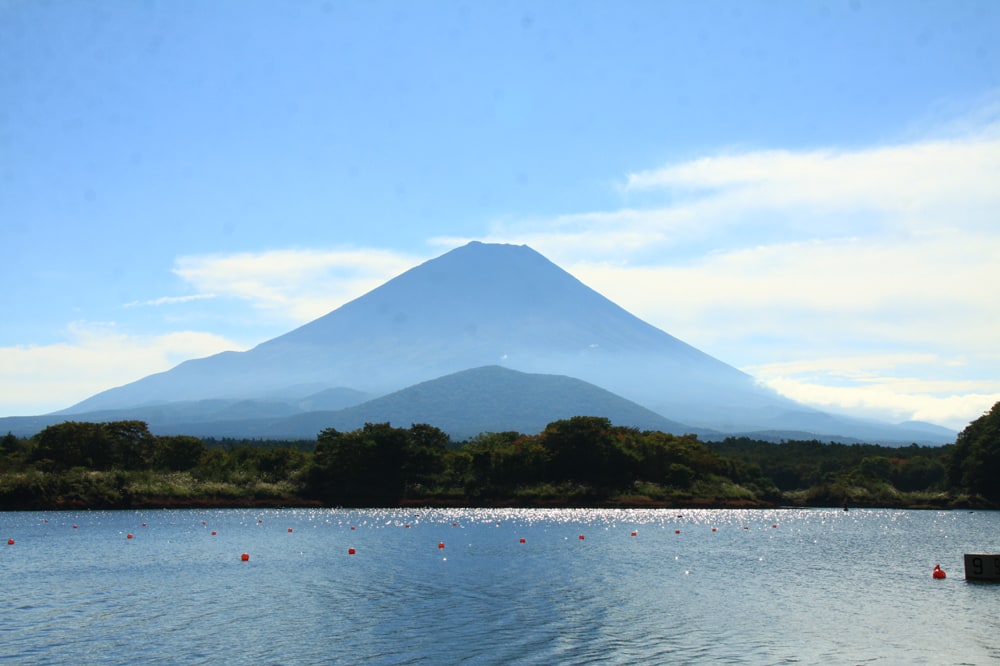
Lake Shojiko…It’s the smallest lake out of the Fuji Five Lakes but its water transparency is 11.2 meters and it’s ranked in the top 10 for that among lakes in Japan. Lake Shojiko has a complicated shape and its contrast with the surrounding scenery makes it unique and it’s called Switzerland of the East for its beautiful scenery. Also, the view of Mt. Fuji from Lake Shojiko is called “Kodaki Fuji (child-holding Fuji)” because when you look at Mt. Fuji from this lake, you can see a smaller mountain in front of Mt. Fuji, which makes it look like Mt. Fuji’s holding the smaller mountain.

Lake Saiko…Out of the Fuji Five Lakes, it’s the least developed lake for tourism and it’s kept its natural state. It’s also known to have colonies of Fuji Marimo Moss Balls, which is designated as a prefectural natural treasure.
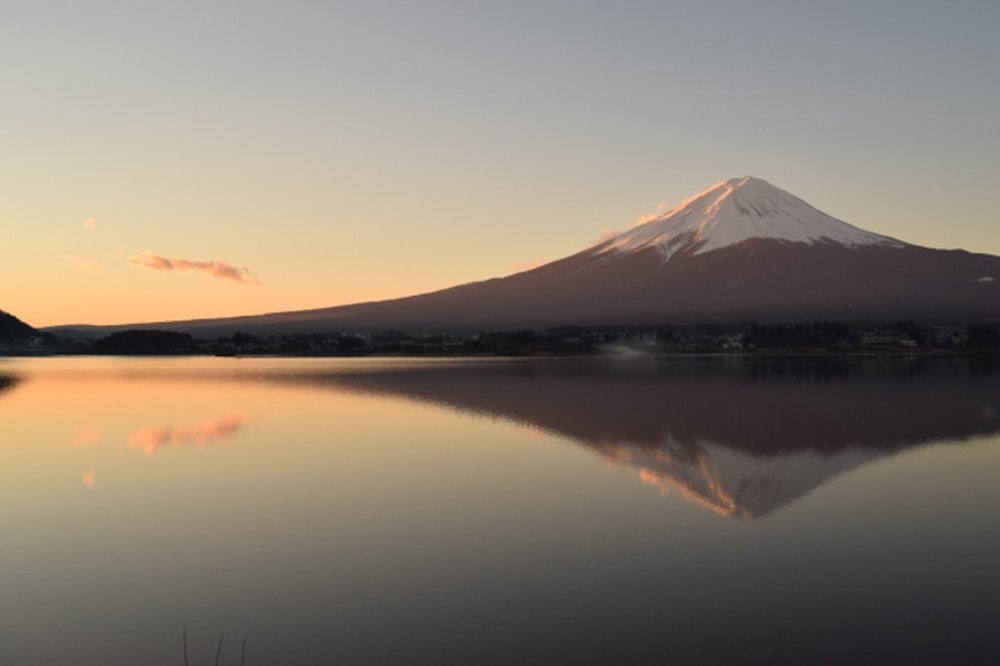
What to see in Fujikawaguchiko
Around Lake Kawaguchiko is a spot where you can see “Sakasa Fuji (inverted Mt. Fuji)”. The image of inverted Mt. Fuji on the lake’s surface looks so clear as if it’s a reflection in a mirror. It’s been a well-known sight since long ago as Hokusai Katsushika even created the print of this scenery called “Koshu Misaka Suimen (Reflection in lake at Misaka in Kai Province)”.
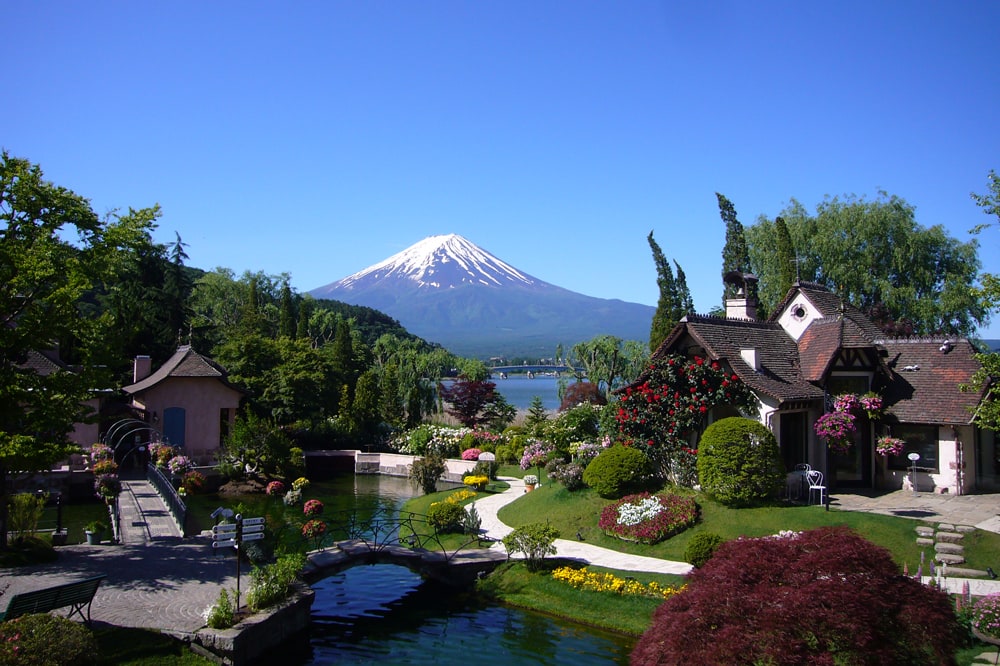
Kawaguchiko Music Forest Museum is also a famous tourist attraction. They exhibit valuable music boxes and mechanical musical instruments from Medieval Europe, and you can also enjoy listening to music played by one of the world’s biggest mechanical dance organs and other instruments. “Philharmonic Orchestrion Titanic Model” is one of those instruments they have on display here and music played by this orchestrion sounds as amazing as music played by an 80 people orchestra. It’s an excellent instrument comparable to a real philharmonic orchestra when it comes to its volume of sound. Also, this orchestrion was apparently supposed to be installed in the Titanic.
Moreover, you can enjoy a townscape of Medieval Europe replicated outside the museum and they have a rose garden with 720 different kinds of roses and a total of 1,200 rose plants are flowering beautifully. This is a must-see!
 LINK
LINKKawaguchiko Music Forest
http://fuji.kawaguchikomusicforest.jp/
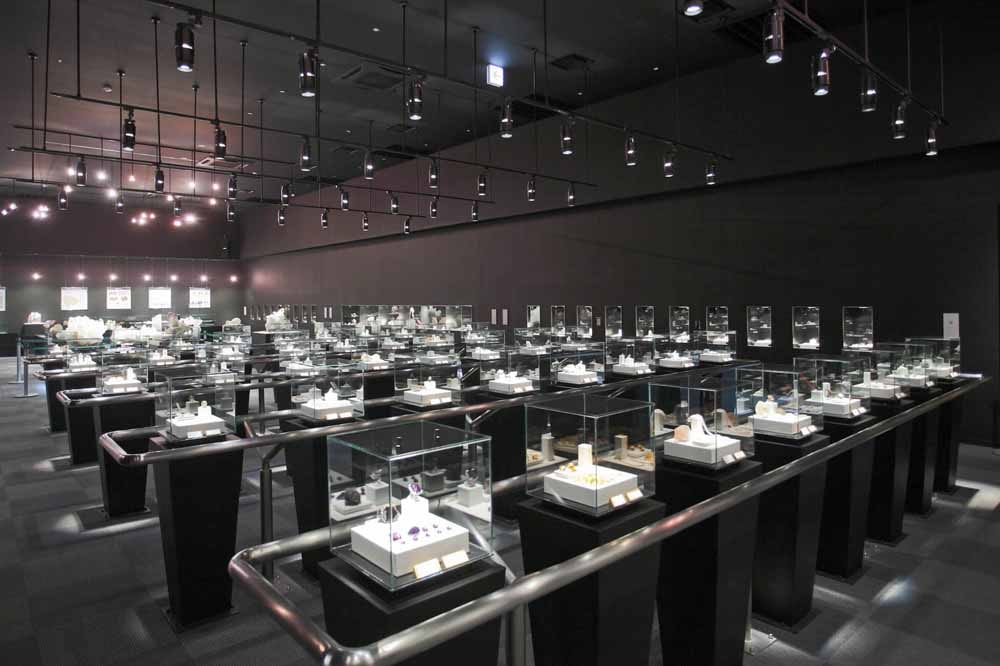
Yamanashi Gem Museum is another must-see spot. Yamanashi Prefecture is the national center of production of gemstones. This museum was opened in order to show charms of gemstones and to share the knowledge about them, and it’s also widely known as the museum devoted to gemstones in Japan. They exhibit about 3,000 pieces of 500 different kinds of precious gems from all over the world.
They also have a museum shop where you can purchase items that you can’t find anywhere else including ores and mineral specimens as well as jewelry.
 LINK
LINKYamanashi Gem Museum
https://www.gemmuseum.jp/en/
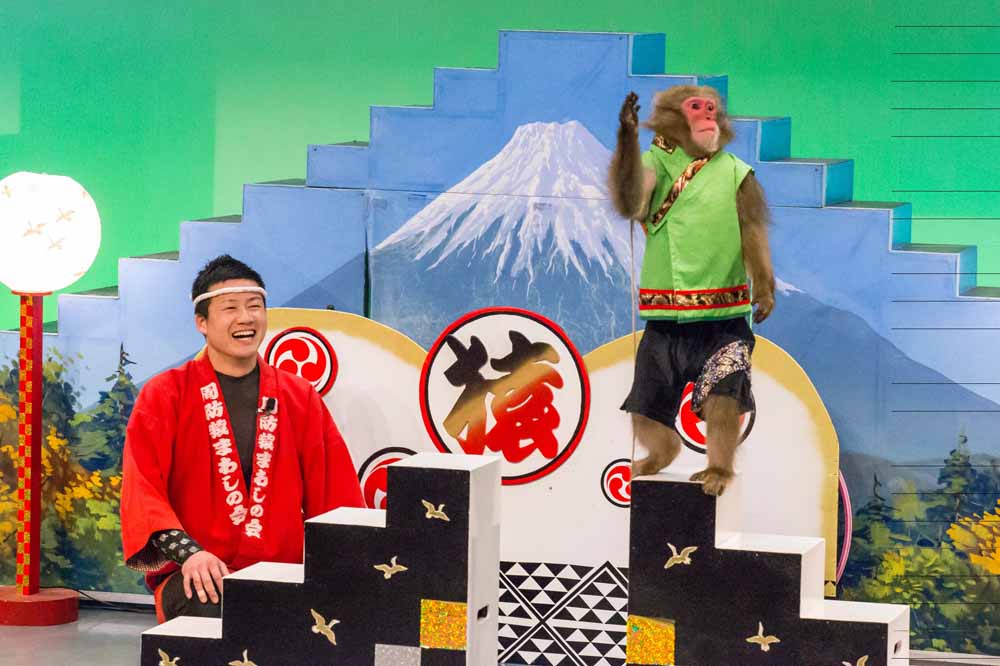
One kind of entertainment that is unique to Japan is “Sarumawashi (monkey dancing)”. Monkey in Japanese is “猿(saru)” and since it has the same sound as “去る(saru)” meaning to remove, it has been believed that monkeys “remove the evil influences for us” and that they are messengers of god. For that reason, Sarumawashi has been established as a very auspicious type of entertainment that “remove the evil influences and brings good luck”. Kawaguchiko Monkey Show Theater is an indoor theater made for Sarumawashi shows. They run the shows with subtitles in English, Chinese and Korean so this has become a popular spot for tourists from overseas.
 LINK
LINKKawaguchiko Monkey Show Theater
https://www.fuji-osaru.com/
Things to be aware of when visiting Fujikawaguchiko
It depends on the weather conditions whether you’ll be able to see “Sakasa Fuji (inverted Fuji)”. You can see it only when the weather is nice with calm wind. If you’re visiting to see “Sakasa Fuji”, we recommend planning your trip in consideration of the weather conditions.
Lake Kawaguchiko is a Black bass fishing mecca, which is an irresistible fishing spot for anglers, but please note that it’s prohibited to use worms which could potentially have negative impact on the lake, and you’ll also need to pay for a fishing permit and a fishing tax to fish there.
What kind of history is there in Fujikawaguchiko?
Until about 5 million years ago, Fuji Five Lakes actually laid at the bottom of the sea. Back then, the Fujikawa Chanel ran up to the Kofu Basin.
About 200,000 to 700,000 years ago, Komitake Volcano and Ashitaka Volcano started to be active, and then Kofuji Volcano was formed. From its volcanic activity, Lake Utsuko, the origin of current Lake Yamanakako and Oshino Hakkai Springs, was formed on its east side, and Lake Senoumi, the origin of current Lake Kawaguchiko, Lake Saiko, Lake Shojiko and Lake Motosuko, was formed in its north side.
Due to Kofuji Volcano’s vigorous activity, part of Lake Senoumi was separated and it became Lake Kawaguchiko. Thus the era of the great three lakes started, which is said to be 10,000 to 15,000 years ago. However, all the lakes but Lake Senoumi later became extinct. Then as Shinfuji Volcano’s activity became vigorous, Lake Kawaguchiko was newly formed by the lava flow spread to the river. At the same time, the lava flow separated Lake Senoumi and Lake Motosuko was formed.
About 1,000 to 2,000 years ago, from more eruptions of Shinfuji Volcano, Lake Saiko and Lake Shojiko were formed by the Aokigahara lava flow and Lake Yamanakako was formed by the Takamarubi lava flow. This was how the current Fuji Five Lakes were formed.
